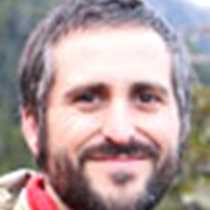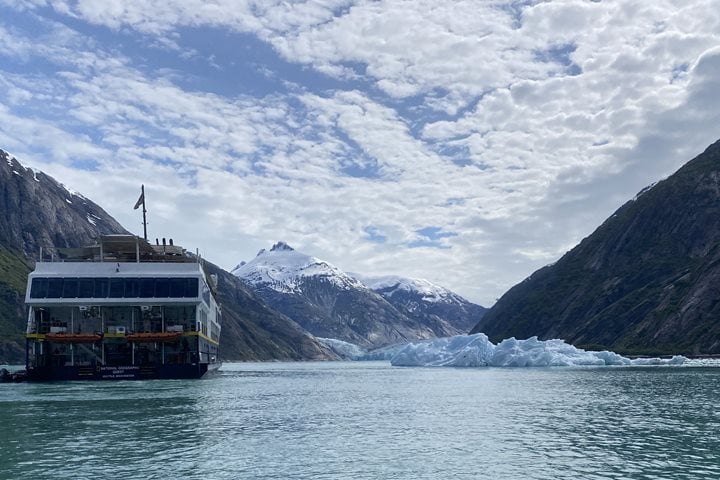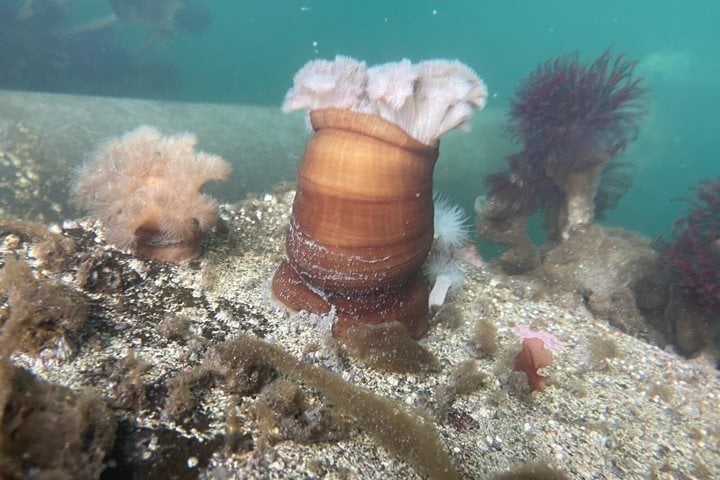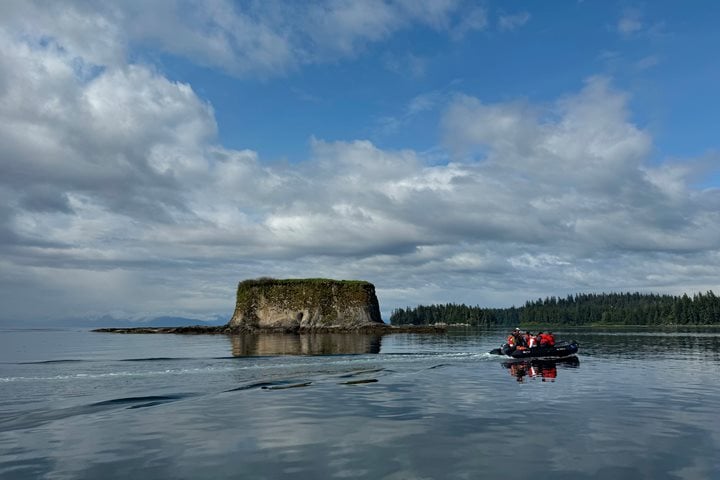We awoke today, our first of many days, aboard National Geographic Sea Bird in Endicott Arm, a 25 mile fjord that is part of the Tracy Arm - Ford’s Terror Wilderness Area. Steep igneous plutons underlay the area’s mountain peaks and deep fjordal valleys shaped by thousands of years of glacial advance and retreat. At the end of the Endicott Arm stands Dawes Glacier, the fjord’s ponderous architect. As we watched from our expedition landing craft, giant sapphire blue icebergs calved from the glacier’s face sending tsunami-like waves radiating towards us. For several moments, the fjord was alive with wheeling arctic terns diving for fish swept to the surface by the plunging bergs, and harbor seals awakened from their iceberg slumber. Even the soundscape changed, as the quiet crackling of slush ice gave way to the rush of surging waves that scoured the shore. Eventually the silence returned and we once again settled back in our seats to take in the sublime scenery.
In the afternoon we repositioned to Ford’s Terror, a smaller, yet no less dramatic fjord extending north from Endicott’s main arm. Ford’s Terror was named after Harry Ford who visited the area in 1889 while surveying for the U.S. Navy. Rushing tidewaters create turbulent standing waves as they stream through the narrow opening to the fjord—something that Ford was unaware of when, after rowing in through the calm slack waters, he attempted to make his way back out at peak flow. Though we were far more delighted than terrified as we watched the swirling rips and eddies form, we were very much appreciative of our 60hp engines. Had we too only had oars, we would have missed the beautiful landscape with its impossibly steep walls draped with ferns, wildflowers, and berry bushes.
Eventually, we made our way out of the wilderness area and headed south down Stephen’s Passage. As night began to fall, dozens of Dall’s porpoises joined us and danced below our bow. These porpoises are the fastest marine mammals on the planet and they clearly enjoyed darting back and forth in our bow wave. Soon after, half a dozen humpbacks appeared on the horizon, their spouts hanging in the air after each surfacing as their flukes slipped below the surface. Nightfall eventually ended the show and we all returned to our rooms excited by what we had just seen and, equally, for what lay ahead.







